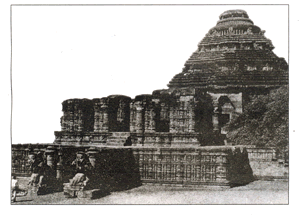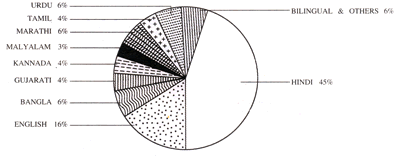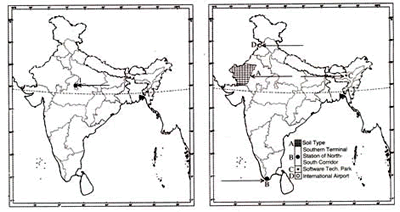Q.1. Write any four main demands of ‘Indian Social Conference’. (4 x ½ = 2 )
Q.2. What are the two major problems faced by jute industry in India? Name any two buyers of our jute products. (1 + 1 = 2)
Q.3. What is meant by economic development? Write the two bases of measuring economic development of a country. (1 + 1 = 2)
Q.4. State any two ill-effects of casteism. (2 x 1 = 2)
Q.5. What is the meaning of ‘First Aid’? State any two main objectives of First Aid. (1 + 1 = 2)
Q.6. Explain with any two examples, the contributions of Annie Besant in the development of the national awakening in India. (2 x 1 = 2)
Q.7. “The period from the last phase of the fourth century A.D. and ending in about the eighth century A.D. of Ancient Indian History is often called as a Classical Age of Indian Civilization.” Give two reasons to support this statement. (2 x 1 = 2)
Q.8. Explain with examples any two measures of controlling land degradation in India. (2 x 1 = 2)
Q.9. How do industries cause water pollution? Explain by giving two points. (2 x 1 = 2)
Q.10. Explain briefly any two factors responsible for the low literacy rate of women in India. (2 x 1 = 2)
Q.11. Explain with examples any two damaging effects of earthquakes on the ground. (2 x 1 = 2)
Q.12. Name the grand architectural structure given below and also write two of its characteristics. (1 + 1 = 2)

Note: The following question is for the Blind Candidates only in lieu of Q. No. 12.
Which temple is known as the 'Black Pagoda' ? Write two characteristics of it. (1+1=2)
Q.13. Why did the Indian National Congress change its goal from Swaraj to Puma (Complete) Swaraj? Give four reasons. (4 x 1 = 4)
Or
Explain the main features of ‘Boycott Movement’ and ‘Swadeshi Movement’. (2 + 2 = 4)
Q.14. Describe any four reforms brought in Indian agriculture after Independence through the efforts of the Indian Government. (4 x 1 = 4)
Or
Describe any four ways through which Indian agricultural products can easily face global competition. (4 x 1 = 4)
Q.15. Explain any four points of importance of non-conventional sources of energy. (4 x 1 = 4)
Q.16. Explain any four strategies adopted by the Government of India to solve the problem of poverty. (4)
Q.17. “Legal literacy reminds us about our rights, duties and legal obligations towards Indian society.” Support this statement with four facts. (4 x 1 = 4)
Q.18. Explain any four efforts of Indian Government in maintaining peace with its neighbouring country, Pakistan. (4 x 1 = 4)
Q.19. Study the diagram given below showing circulation of newspapers in India and answer the questions that follow: (2 + 2 = 4)
(19.1) In which language are the largest number of newspapers published in our country? Write its percentage also.
(19.2) What do you conclude from this high percentage? Give two facts in support of your answer.
INDIA
PUBLICATION OF NEWSPAPERS & PERIODICALS BY LANGUAGES (2000)

Note: The following question is for the Blind Candidates only in lieu of Q. No. 19. Explain any four points of importance of means of mass communication in modem days. (4 x 1 = 4)
Q.20. If you see someone in a fainted condition, how would you help that person? Suggest any four measures. (4 x 1 = 4)
Q.21. Explain the contribution of forests in the economic development of our country, giving any six points. (6 x 1 = 6)
Or
Explain any six factors responsible for the growing water scarcity in India. 6x16 Ans. Six factors responsible for the growing water scarcity in India:
Q.22. Why were ‘Tabligh’ and ‘Shuddhi’ movements started? What were their results? Explain with examples. (6)
Or
Examine the reasons responsible for the rise of Indian nationalist upsurge after the Second World War. (6)
Q.23. Explain three causes of price rise in India. How is the public distribution system helpful in controlling the price rise? Explain with suitable examples. (3 + 3 = 6)
Or
Who is a consumer? Explain five duties of consumers. (1 + 5 = 6)
Q.24.
Or
On the given political outline map of India, locate and label the following features:
